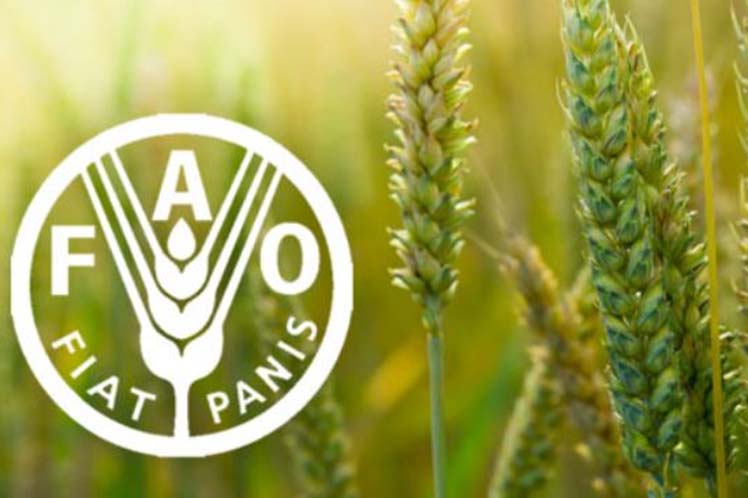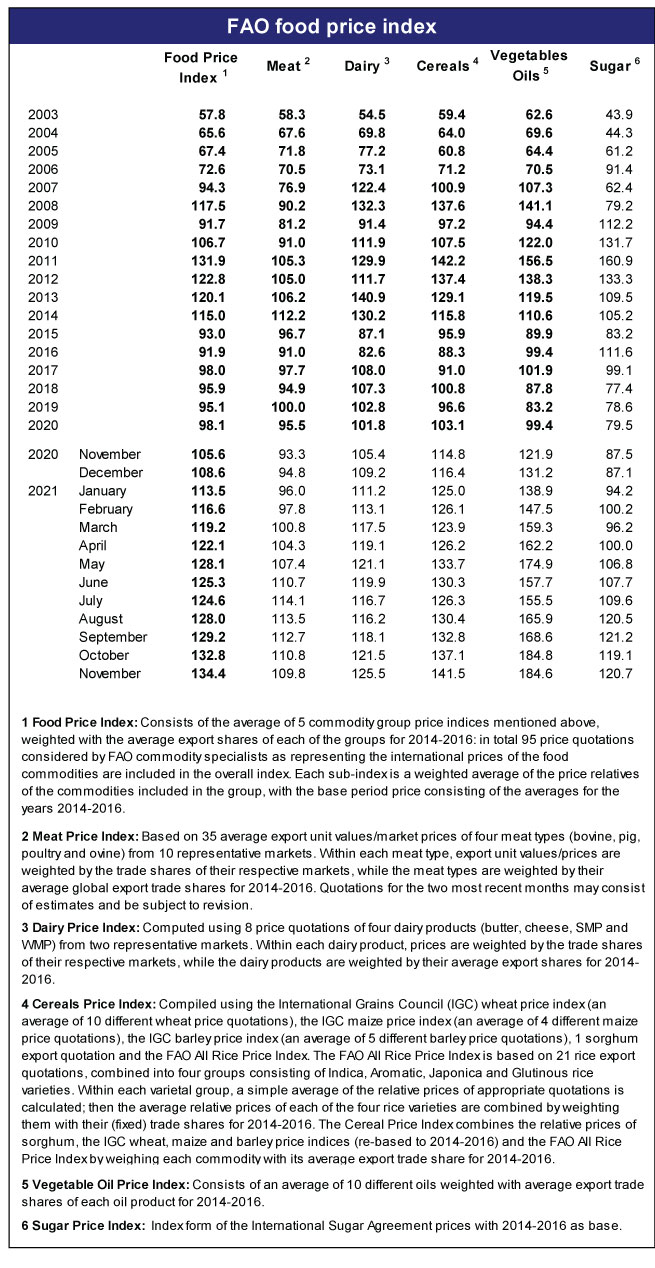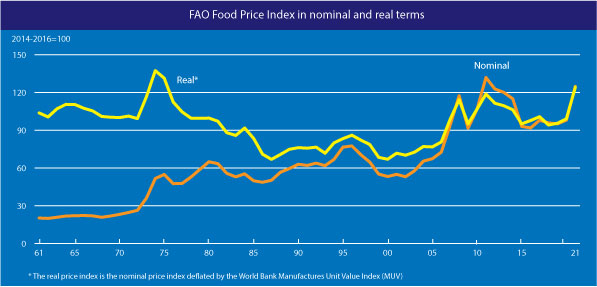FAO Food Price Index rises in November

The barometer of food commodity prices in international markets rose for the fourth consecutive month in November, led by strong demand for wheat and dairy products, the Food and Agriculture Organization of the United Nations (FAO) reported today.
The FAO Food Price Index averaged 134.4 points in the month, its highest level since June 2011 and 1.2 percent higher than during October. The index, which tracks monthly changes in the international prices of commonly-traded food commodities, was 27.3 percent higher than its level in November 2020.
The FAO Dairy Price Index led November’s aggregate rise, increasing by 3.4 percent from the previous month. Strong global import demand persisted for butter and milk powders as buyers sought to secure spot supplies in anticipating of tightening markets.
The FAO Cereal Price Index increased by 3.1 percent in November from the previous month and was 23.2 percent higher than its year-ago level. Maize export prices rose slightly and international rice prices remained broadly steady, while wheat prices hit their highest level since May 2011. The increase reflected strong demand amid tight supplies, especially of higher quality wheat, while prices were also supported by concerns about untimely rains in Australia and uncertainty regarding potential changes to export measures in the Russian Federation.
The FAO Sugar Price Index was 1.4 percent higher in November than in October and nearly 40 percent above its level in November 2020. The increase was primarily driven by higher ethanol prices, though large shipments from India and a positive outlook for sugar exports by Thailand tempered the upward pressure on quotations.
The FAO Vegetable Oil Price Index declined by 0.3 percent from a record high reached in October, reflecting lower values for soy and rapeseed oils as well as lower crude oil prices. International palm oil prices remained firm.
The FAO Meat Price Index decreased by 0.9 percent, its fourth consecutive monthly decline. Influenced by reduced purchases of pig meat by China led to lower international quotations, while ovine prices also fell steeply on increased exportable supplies from Australia. Bovine and poultry meat prices were largely stable.

Read also
Wheat in Southern Brazil Impacted by Dry Weather and Frosts
Oilseed Industry. Leaders and Strategies in the Times of a Great Change
Black Sea & Danube Region: Oilseed and Vegoil Markets Within Ongoing Transfor...
Serbia. The drought will cause extremely high losses for farmers this year
2023/24 Safrinha Corn in Brazil 91% Harvested
Write to us
Our manager will contact you soon




